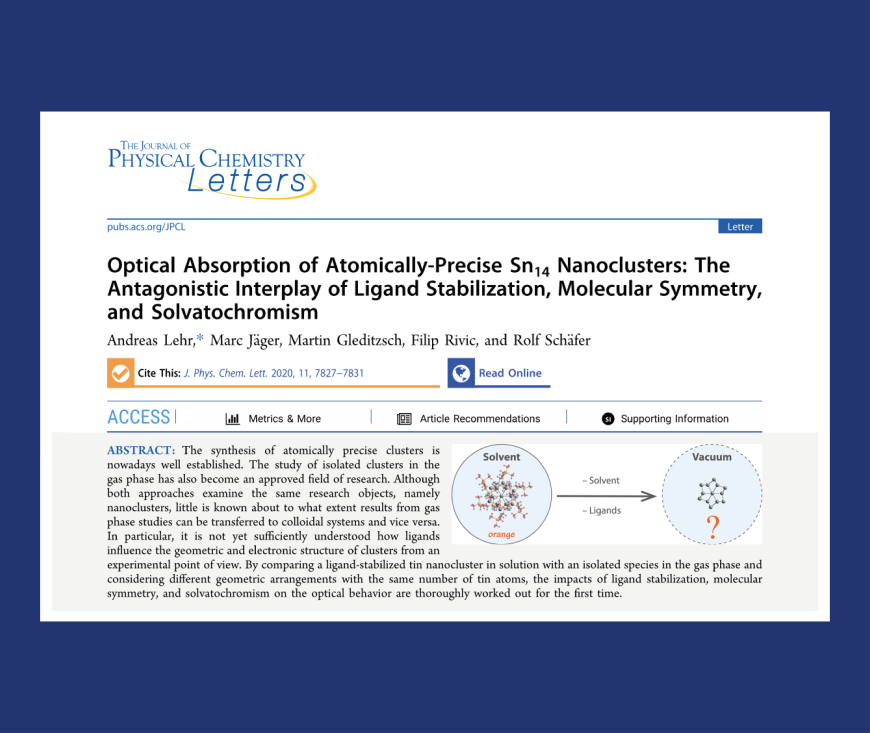Bridging the Gap Between Isolated Gas-Phase and Ligand-Stabilized Colloidal Clusters
An Investigation of the Optical Properties of Sn₁₄
2020/09/03
The cluster research of isolated particles in the molecular beam differs fundamentally from the preparation and characterization of mostly ligand-stabilized nanoparticles in colloidal solutions. While the former is particularly suitable for elucidating fundamental properties and thus belongs to classical basic research, the synthesis of clusters in solution is a direct way to explore potential applications in e.g. catalysis. It is therefore of central interest to clarify the extent to which results from the gas phase can be transferred to cluster systems in solution. In this context, we have for the first time investigated isolated clusters, here Sn₁₄, in a molecular beam with respect to their optical behavior and compared them with a ligand-stabilized analogue in a benzene solution.

We observed a remarkable similarity in the absorption spectra of both species, which would not have been expected due to the different structure and composition as well as the chemical environment. With the help of electric beam deflection measurements and intensive quantum chemical analyses we could conclude an interesting interplay of different mutually suppressing physicochemical effects. The ligands stabilize a highly symmetric topology of the cluster, which results in strongly emphasized absorption bands and is blueshifted compared to the gas phase. This counteracts the redshift caused by the solvent and the spread of individual excitation bands in the absorption spectrum. These results are of interest for many other nanoclusters and emphasize the importance of studying ligand-stabilized clusters in the molecular beam in the future.


